Hyundai IONIQ 6 vs Renault R5 – Which model is better for everyday use?
Two cars, one duel: Hyundai IONIQ 6 meets Renault R5.
Which one wins in performance, efficiency and value for money? Find out now!
Costs and Efficiency:
When it comes to price and running costs, the biggest differences usually appear. This is often where you see which car fits your budget better in the long run.
Renault R5 has a significantly advantage in terms of price – it starts at 23900 £, while the Hyundai IONIQ 6 costs 37600 £. That’s a price difference of around 13714 £.
In terms of energy consumption, the advantage goes to the Hyundai IONIQ 6: with 13.90 kWh per 100 km, it’s minimal more efficient than the Renault R5 with 14.80 kWh. That’s a difference of about 0.90 kWh.
As for range, the Hyundai IONIQ 6 performs noticeable better – achieving up to 614 km, about 209 km more than the Renault R5.
Engine and Performance:
Power, torque and acceleration are the classic benchmarks for car enthusiasts – and here, some clear differences start to show.
When it comes to engine power, the Hyundai IONIQ 6 has a a bit edge – offering 650 HP compared to 540 HP. That’s roughly 110 HP more horsepower.
In acceleration from 0 to 100 km/h, the Hyundai IONIQ 6 is barely noticeable quicker – completing the sprint in 3.20 s, while the Renault R5 takes 3.50 s. That’s about 0.30 s faster.
In terms of top speed, the Renault R5 performs slight better – reaching 270 km/h, while the Hyundai IONIQ 6 tops out at 257 km/h. The difference is around 13 km/h.
There’s also a difference in torque: Renault R5 pulls convincingly stronger with 4800 Nm compared to 770 Nm. That’s about 4030 Nm difference.
Space and Everyday Use:
Cabin size, boot volume and payload all play a role in everyday practicality. Here, comfort and flexibility make the difference.
Both vehicles offer seating for 5 people.
In curb weight, Renault R5 is noticeable lighter – 1447 kg compared to 1850 kg. The difference is around 403 kg.
In terms of boot space, the Hyundai IONIQ 6 offers slightly more room – 401 L compared to 326 L. That’s a difference of about 75 L.
When it comes to payload, Hyundai IONIQ 6 slight takes the win – 430 kg compared to 418 kg. That’s a difference of about 12 kg.
Who comes out on top?
Overall, the Renault R5 shows itself to be slightly ahead and secures the title of DriveDuel Champion.
It convinces with the more balanced overall package and proves to be the more versatile choice for everyday use.
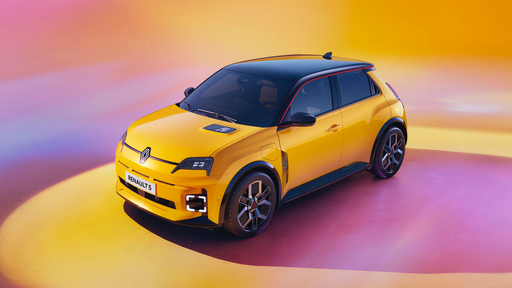
Renault R5
Hyundai IONIQ 6
The Hyundai IONIQ 6 merges futuristic design with eco-friendly technology, offering a glimpse into the future of electric mobility. Its sleek silhouette and aerodynamic profile are sure to capture attention on the road, while the interior provides a seamless blend of comfort and cutting-edge digital features. With a focus on efficiency and sustainability, this model represents a significant step forward in the evolution of electric vehicles.
details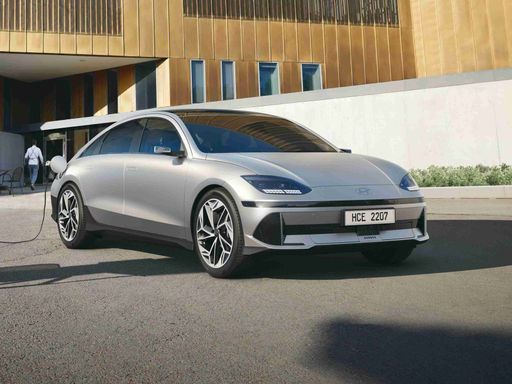 @ hyundai.news
@ hyundai.news
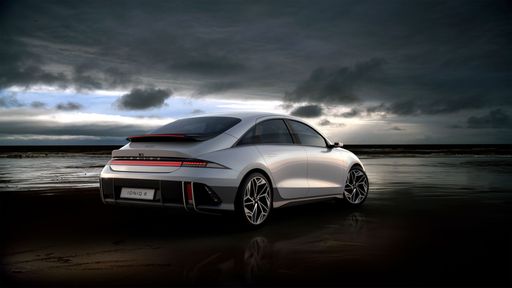 @ hyundai.news
@ hyundai.news
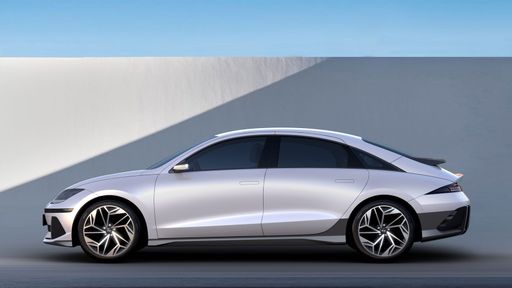 @ hyundai.news
@ hyundai.news
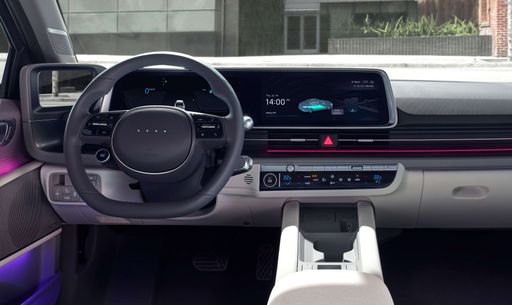 @ hyundai.news
@ hyundai.news
Renault R5
The Renault R5 is a classic hatchback that captured the imagination of drivers with its distinctive design and compact versatility. Its agile handling and efficient performance made it a popular choice in urban settings and winding country roads alike. With a blend of style and practicality, the Renault R5 remains a beloved icon in automotive history.
details @ media.renault.at
@ media.renault.at
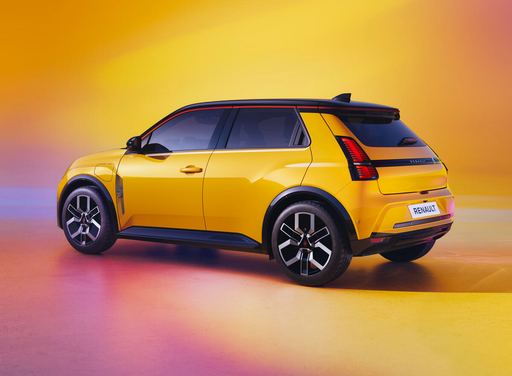 @ media.renault.at
@ media.renault.at
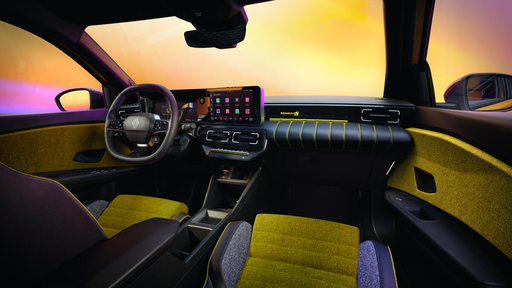 @ media.renault.at
@ media.renault.at

|

|
|
|
|
Costs and Consumption |
|
|---|---|
|
Price
37600 - 64300 £
|
Price
23900 - 137100 £
|
|
Consumption L/100km
-
|
Consumption L/100km
-
|
|
Consumption kWh/100km
13.9 - 15.1 kWh
|
Consumption kWh/100km
14.8 - 15.2 kWh
|
|
Electric Range
429 - 614 km
|
Electric Range
307 - 405 km
|
|
Battery Capacity
53 - 84 kWh
|
Battery Capacity
40 - 52 kWh
|
|
co2
0 g/km
|
co2
0 g/km
|
|
Fuel tank capacity
-
|
Fuel tank capacity
-
|
Dimensions and Body |
|
|---|---|
|
Body Type
Hatchback
|
Body Type
Hatchback
|
|
Seats
5
|
Seats
2 - 5
|
|
Doors
4
|
Doors
3 - 5
|
|
Curb weight
1850 - 2095 kg
|
Curb weight
1447 - 1524 kg
|
|
Trunk capacity
401 L
|
Trunk capacity
326 L
|
|
Length
4855 - 4935 mm
|
Length
3922 - 4080 mm
|
|
Width
1880 - 1940 mm
|
Width
1744 - 2030 mm
|
|
Height
1495 mm
|
Height
1380 - 1498 mm
|
|
Max trunk capacity
-
|
Max trunk capacity
1106 L
|
|
Payload
425 - 430 kg
|
Payload
396 - 418 kg
|
Engine and Performance |
|
|---|---|
|
Engine Type
Electric
|
Engine Type
Electric
|
|
Transmission
Automatic
|
Transmission
Automatic
|
|
Transmission Detail
Reduction Gearbox
|
Transmission Detail
Reduction Gearbox
|
|
Drive Type
Rear-Wheel Drive, All-Wheel Drive
|
Drive Type
Front-Wheel Drive, Rear-Wheel Drive
|
|
Power HP
151 - 650 HP
|
Power HP
122 - 540 HP
|
|
Acceleration 0-100km/h
3.2 - 8.8 s
|
Acceleration 0-100km/h
3.5 - 9 s
|
|
Max Speed
185 - 257 km/h
|
Max Speed
150 - 270 km/h
|
|
Torque
350 - 770 Nm
|
Torque
225 - 4800 Nm
|
|
Number of Cylinders
-
|
Number of Cylinders
-
|
|
Power kW
111 - 478 kW
|
Power kW
90 - 397 kW
|
|
Engine capacity
-
|
Engine capacity
-
|
General |
|
|---|---|
|
Model Year
2022 - 2025
|
Model Year
2025 - 2027
|
|
CO2 Efficiency Class
A
|
CO2 Efficiency Class
A
|
|
Brand
Hyundai
|
Brand
Renault
|
What drive types are available for the Hyundai IONIQ 6?
Available configurations include Rear-Wheel Drive or All-Wheel Drive.
The prices and data displayed are estimates based on German list prices and may vary by country. This information is not legally binding.
